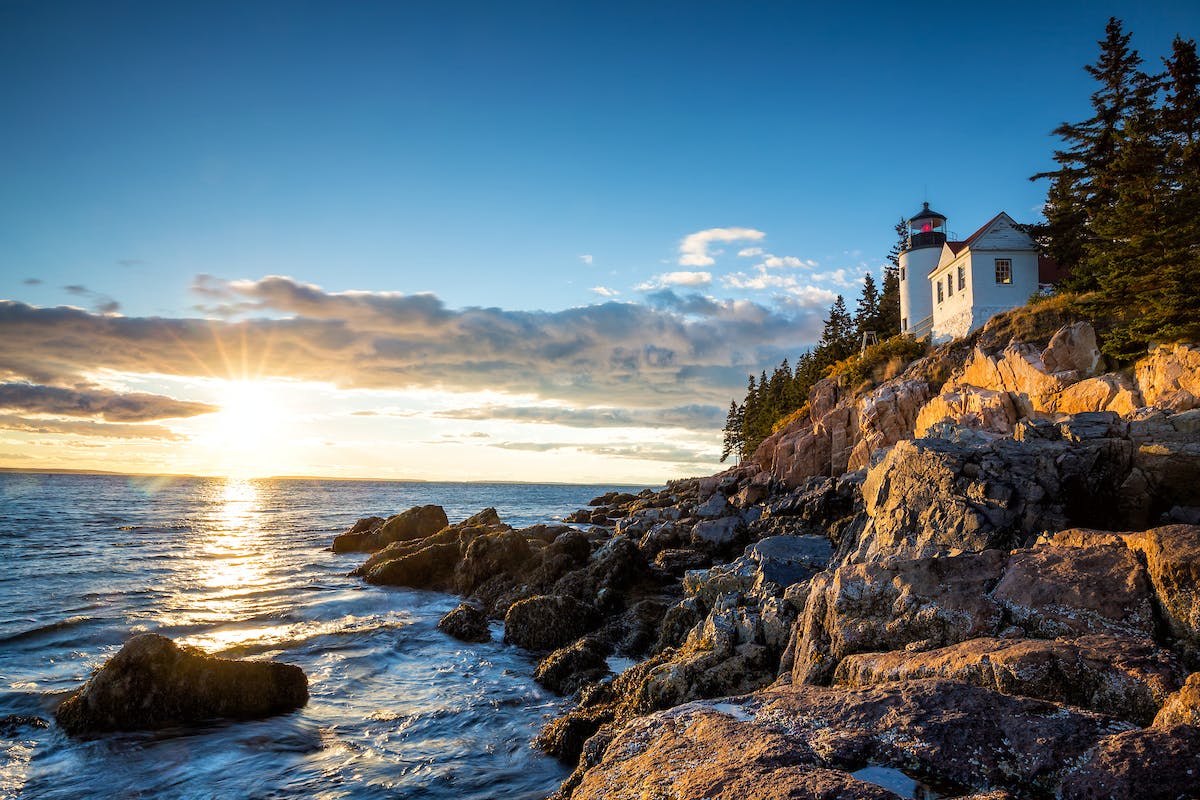How to Choose Your Cruise to Canada and New England
Historic lighthouses and pastoral villages. Storybook islands and whale-watching adventures. Fiery fall foliage and cities oozing Old World charm. Expect all this and more on a cruise to New England and northeastern Canada.
Just take New England, whose scenic and cultural charms stand defiantly tall. I first fell in love with them during prep school in rural Massachusetts, reinforced by college in a Boston suburb. At age 16, I was gobsmacked by the towering mounds of pristine snow — the first I’d ever seen — and the incendiary blaze of autumn leaves, so achingly beautiful.
I found New Englanders to be sensible, not flashy or given to extremes, despite nature’s drama in their own backyard — from the evergreen mountains to the jagged coastline, speckled with sandy beaches, rocky outcroppings and soul-stirring dunes. That scenery evokes a dreamy, romantic air, ideal for an intimate getaway for two. It also begs to be immortalized in photos, whether the serenity of a surprise Autumnal fallen snow or the explosion of a fall’s panorama. So be sure to keep your camera at the ready.
History in New England, the “birthplace of America,” is always close at hand along Boston’s iconic Freedom Trail, in Newport’s Gilded Age mansions, and in every colonial-era cottage and white-steepled village church. But the old and the new are constant companions, too. Take Boston, for example, where cobblestoned streets counterpoint glass-encased high-rises, where historic landmarks contrast with hip nightclubs, and where trendy food trucks vie with stalwart gourmet restaurants.
Those eateries serve up classic regional dishes alongside cutting-edge fare. I vividly remember my first Maine lobster — complete with drawn butter and securely tied bib — and my first New England clam chowder, creamy and thick with chunks of potatoes and tasty bivalves. Be sure to sample these if you can, preferably seated seaside while watching the boats at harbor and inhaling the salty sea air.
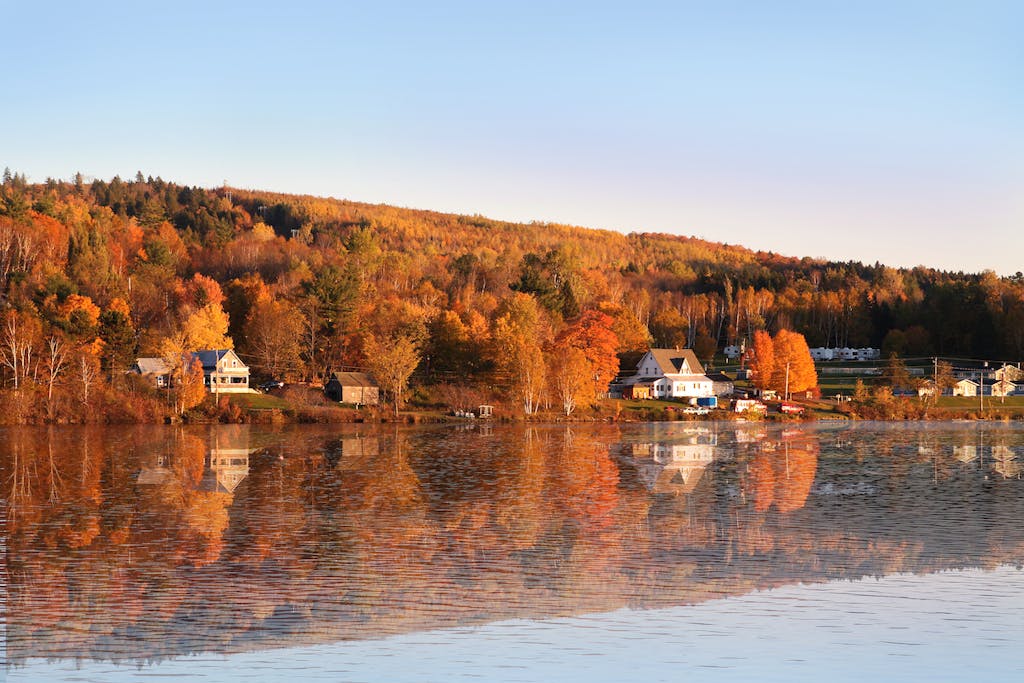
The sea also defines Canada’s three Maritime Provinces — Nova Scotia, Prince Edward Island and New Brunswick. A long, craggy coastline outlines these lightly populated land masses, punctuated by sandy beaches, scenic bays, lofty cliffs and some of the prettiest towns in the Great White North. It’s an area where nature, dramatic and dazzling, reigns supreme.
The massive Gulf of St. Lawrence, the largest estuary in the world, washes over these provinces as it drains the 744-mile-long St. Lawrence River into the Atlantic Ocean. A cruise through these waters reveals a string of remote ports where French, Acadian and First Nation cultures vie with forest-clad national parks and the buzz of whale watching for your attention.
My own introduction to this region was on just such a cruise, when I learned that whales can be identified fingerprint-like by the markings on their tails or behind their blowholes. And when I thrilled to a performance that can put Broadway to shame: mighty humpbacks spewing their powerful blows before flicking their tails on their way back down under, showy belugas flaunting their distinctive white backs against gray-blue bodies and playful minkes defying gravity by leaping whole-bodied out of the water.

I was smitten with Quebec City, too, a historic wonder that bites deep and doesn’t let go. It’s the closest you’ll get to Paris in North America. I love photographing each Old World scene, one more photogenic than the next, in a city that is Instagram gold. Counting the astonishing trompe-l’oeil murals, one after the other, that adorn the ancient walls. Eyeing the smartly dressed Quebecers rub shoulders with wide-eyed tourists along some of the oldest and narrowest streets in North America. Browsing for art along Rue du Tresor, a pedestrian alley where local artists paint and peddle their work each day. Admiring the oldest stone church in North America, the 1687 Notre-Dame-des-Victoires — just another record breaker in a city filled with them. Digging into a gooey French onion soup, a city specialty, or a decadently delicious poutine, Canada’s beloved national dish. And marveling at sites that recall the epic 18th-century struggle between England and France for control of North America.
Indeed, there’s no better way to visit New England and Atlantic Canada than approaching it by ship, just as the early explorers and settlers did. Here, we highlight the ports you’re likely to visit on a New England and Canada cruise.
New England
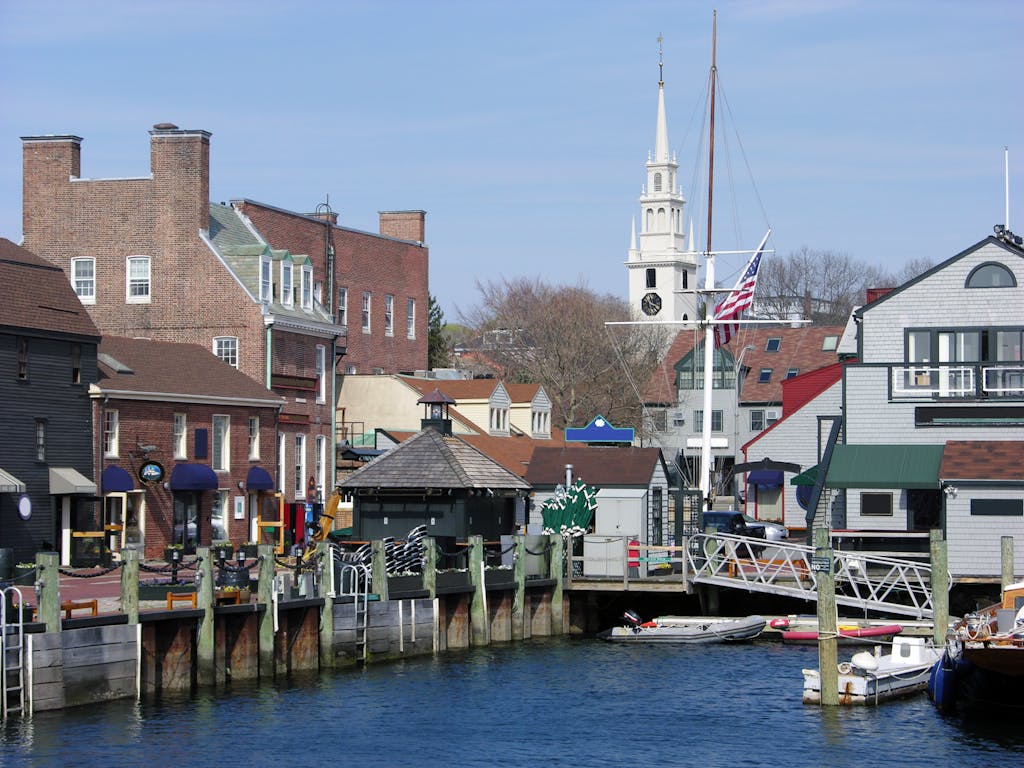
In a nutshell: New England inevitably conjures postcard images of flaming fall foliage, cozy small towns, and white-steepled churches on village greens. But it’s so much more. It’s colonial history and Maine lobsters, a seafaring heritage and Boston baked beans, the Green Mountains and Vermont cheese and maple syrup, and a craggy, nearly 5,000-mile coastline from Rhode Island to Maine.
What you’ll see: Known as The City by the Sea, Newport, Rhode Island, has long been a vacation playground with a fascinating maritime history. With its picturesque wharves and scenic shoreline, it’s a magnet for sailors and those who love the sea. You can tour its waters on a sleek America’s Cup yacht, on a genuine lobster boat, or a Prohibition Era hooch smuggler.
Landlubbers with a taste for the rich and famous can gape starry-eyed at the Gilded Age “cottages” — those opulent seaside mansions owned by America’s wealthiest families. And serenity seekers can stroll the 3.5-mile-long Cliff Walk, one of the most panoramic — and inspiring — walks anywhere.
On your way to Boston, enjoy the glide through Massachusetts’ seven-mile-long Cape Cod Canal, a bustling artificial waterway that is easy only for smaller ships to navigate. Wildlife lovers will thrill to the variety of birds spiraling overhead, including terns, herons, hawks, gulls, ospreys and cormorants, as well as marine mammals from the humble river otter to the imposing North American right whale.
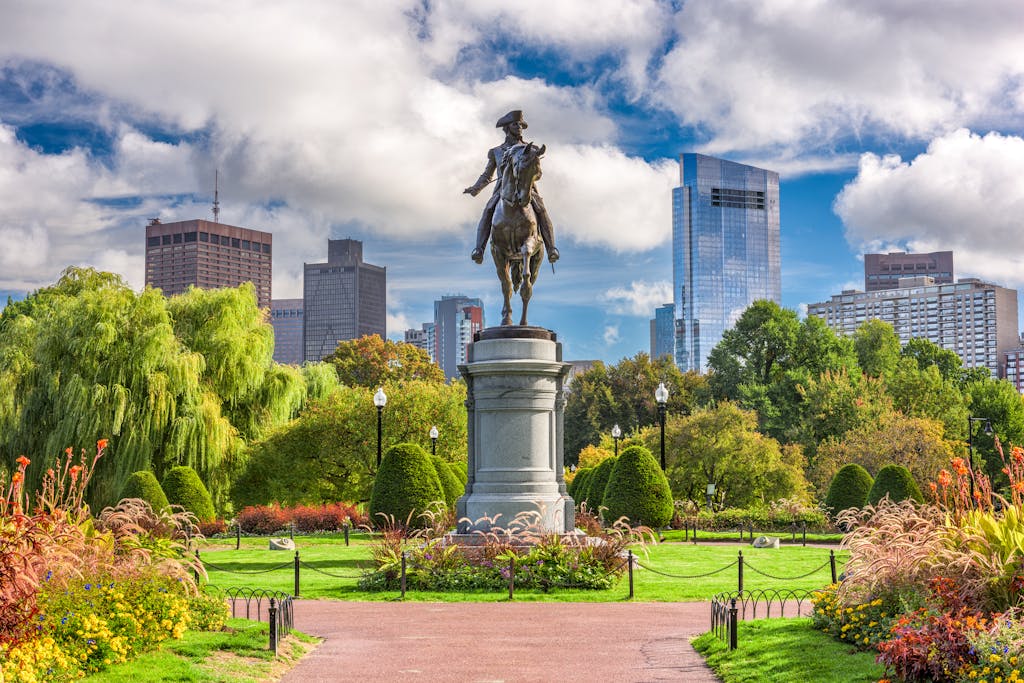
The grand dame of New England cities, Boston has enough famous landmarks and institutions to fill several days. From the hallowed grounds of Fenway Park, home of the revered Red Sox; to iconic Faneuil Hall, America’s first “open” marketplace; to the leafy campus of Harvard University; to the landmark Prudential Center, with its spectacular 360-degree views from the 50th floor. Paul Revere’s House and the Old North Church of revolutionary fame? Yup, you can visit those too. In fact, the city’s storied history springs to life along the Freedom Trail, a 2.5-mile red-brick pathway through Boston’s historic neighborhoods that unfolds the story of the American Revolution, and along the Black Heritage Trail, a 1.6-mile walking tour that explores the history of the 19th-century African American community. More walking opportunities await in the city’s many eclectic neighborhoods, from elegant Beacon Hill and Back Bay to intellectual Cambridge and the Italian-flavored North End. In each you can experience the unique architecture, culinary and commercial offerings, and lifestyle of a city bursting with variety.
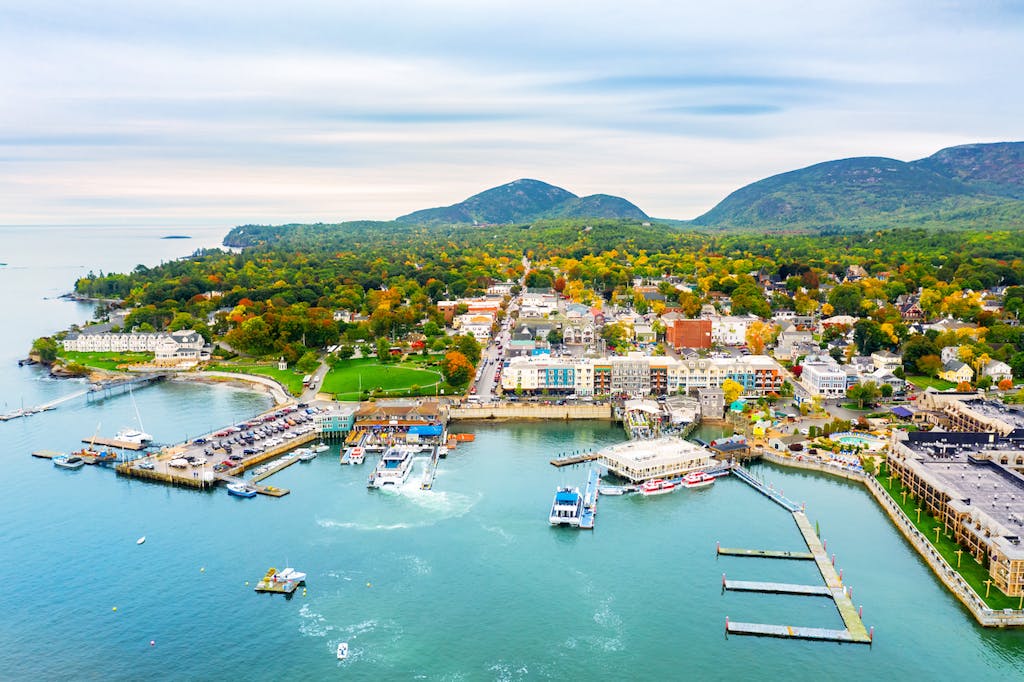
Day trippers may come to the tiny town of Bar Harbor, Maine, to eat just-plucked Maine lobster served seaside with an icy craft beer or to shop for one-of-a-kind items at charming locally owned stores. But they stay for its quirky Down East character, its Insta-worthy coastal scenery, dotted with yachts and lobster boats, and its access to popular Acadia National Park, marked by the highest rocky headlands on America’s Atlantic Coast. You can drive the park’s 27-mile Park Loop Road to enjoy its oceanside cliffs, wooded mountains and stately lighthouses. Or you can take a morning stroll along the town’s scenic Shore Path that stretches for about half a mile along the eastern coast. Better still, head out onto the water in a kayak or sailboat, keeping an eye out for colossal humpbacks exploding out of the sea.
Canada
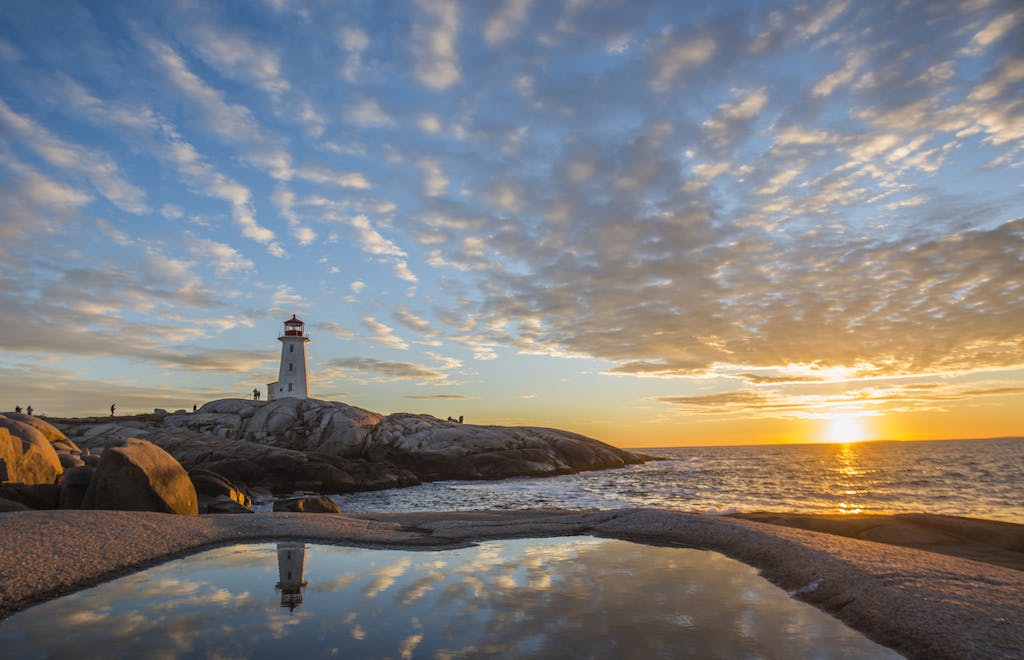
In a nutshell: Dominated by the sea as their name implies, Canada’s Maritime Provinces of New Brunswick, Nova Scotia and Prince Edward Island are wild and ruggedly beautiful, originally settled by shipbuilders and fishermen. Though sparsely populated, they are home to fetching fishing villages, quiet sandy beaches and fascinating marine wildlife. You can go whale watching along the jagged coastline, tuck into the freshest seafood served on a photogenic bay and be seduced by both the Celtic and Acadian cultures.
From the Maritimes, Silversea ships cruise into French Canada via the Gulf of St. Lawrence and the mighty St. Lawrence River. Soak in the area’s French roots, language and culture at small ports along the way as you motor to the queen bee, Quebec’s provincial capital of Quebec City.
What you’ll see: The Canadian maritime vibe is on full display in Halifax, Nova Scotia’s small capital. Stroll the 2.5-mile wooden waterfront boardwalk to browse the shops and galleries housed in historic buildings. Check out the Canadian Museum of Immigration at Pier 21, gateway into Canada for a million immigrants, or the Maritime Museum of the Atlantic, the oldest and largest such museum in Canada. Explore the Victorian-era star-shaped Citadel Hill fort at midday for the firing of the noonday gun. Indulge in a waterfront lobster lunch followed by an afternoon of live Celtic or bagpipe music in a British-style pub.
More dramatic coastal scenery awaits in the Nova Scotian town of Sydney on Cape Breton Island. Rugged and remote, this tiny community of dramatic seaside walks and lovely colonial houses dating to the 1780s is a great place to explore on foot, watch the ships in harbor and listen to a busker fill the salty air with a jaunty tune. Before you leave, get your photo taken beside the world’s largest fiddle, built to recognize Cape Breton’s musical talent.
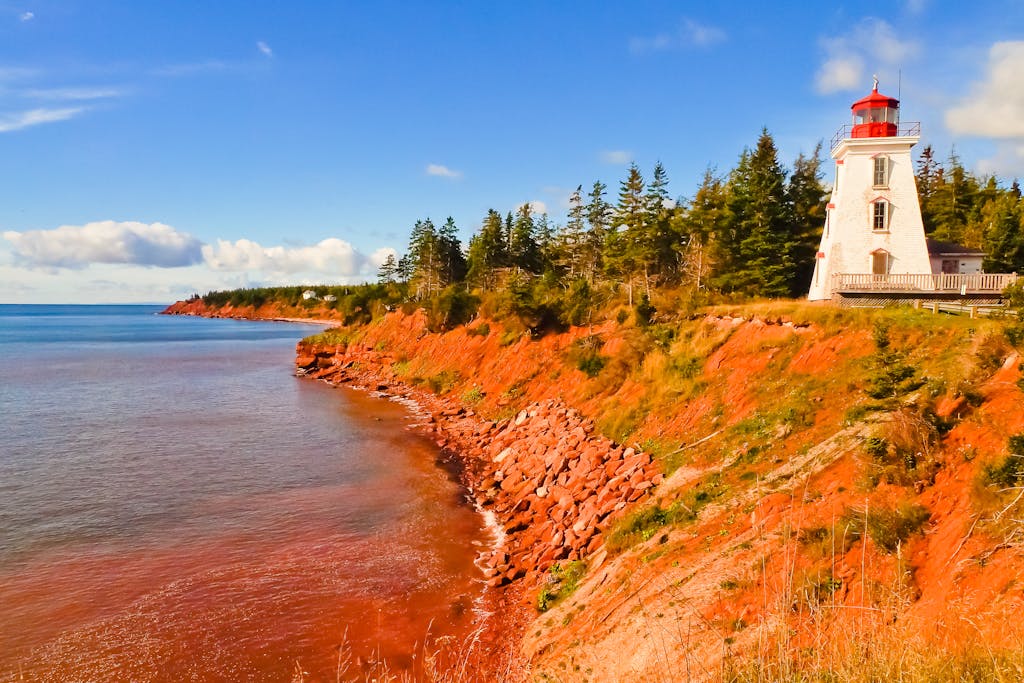
Prince Edward Island may be tiny — it’s Canada’s smallest province — but it’s big with storybook magic, sigh-worthy landscapes and an outsized role in Canadian history. I love walking the well-marked Heritage Trail from the wharf into the tidy capital of Charlottetown. Known as a “city of churches and trees,” it has preserved its small-town appeal with rows of pastel clapboard houses, redbrick Victorian buildings and stately stone churches. The Canadian Confederation that finally united the colonies of British North America was born here in 1864.
But the island’s greatest claim to fame is as the setting for the classic 1908 children’s book, “Anne of Green Gables,” which put the island on the international tourist map. Fans of the plucky freckle-faced red-haired heroine — and I count myself squarely among them — can get their Anne fix at shops and theaters around town. Or better yet by visiting ground zero: the 1830s white clapboard House of Green Gables that inspired the book in the nearby town of Cavendish.
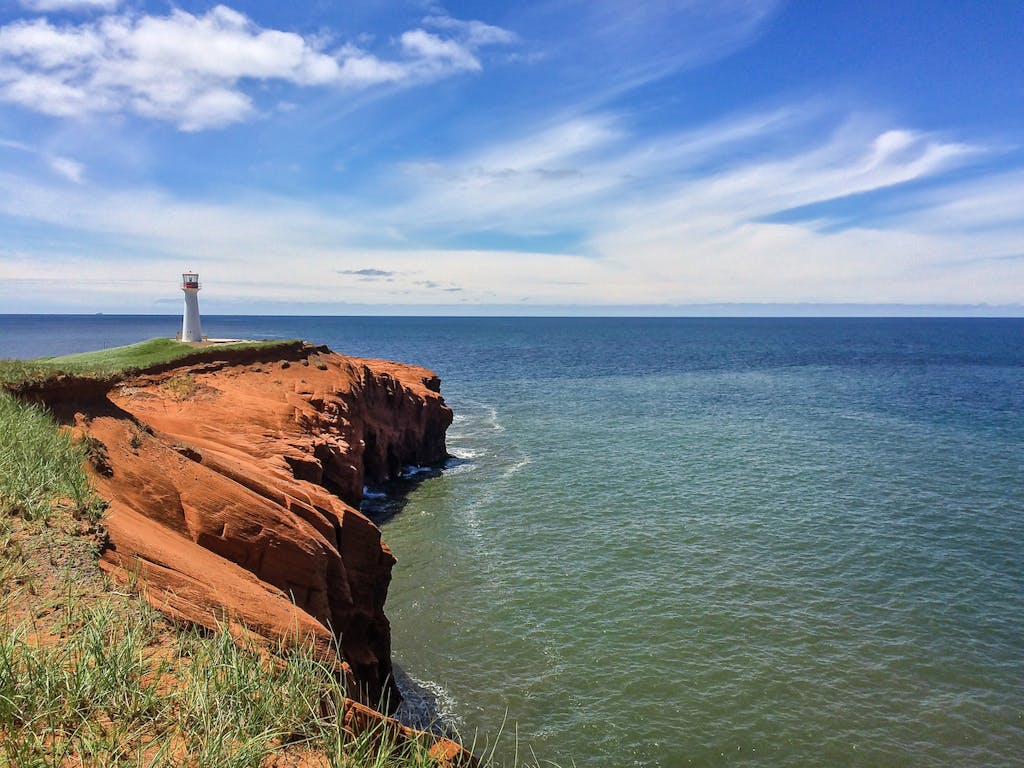
The first of six possible stops in Quebec Province is the Iles-de-la-Madeleine, a small archipelago of 12 islands in the middle of the massive Gulf of St. Lawrence. Nature rules these tiny islands: red sandstone cliffs jutting out of the sea, undulating sand dunes, sheltered wetlands and miles of windswept beaches. Set out on foot to discover your own private strand. Enjoy a seafood lunch of lobster, mussels or crab. And listen carefully for the singsong version of Acadian French spoken by the Madelinots.
Tucked onto the tip of the Gaspé Peninsula, the town of Gaspé is considered “the birthplace of Canada,” since French explorer Jacques Cartier was the first European to land here in 1534. But the area has other claims to fame: the iconic pierced rock at Percé, one of the world’s largest natural arches; four national parks; North America’s largest colony of gannet seabirds; and a rich culture reflecting its native Micmac, Irish, Acadian and French roots.
More startling geological formations await at the tiny port of Havre St. Pierre. Mysterious limestone monoliths, sculpted by wind, water and ice, dot the shoreline of the Mingan Archipelago like ancient silent sentinels. The entire area is otherworldly in its raw beauty and mesmerizing wildlife, where mammoth whales compete with a sturdy lighthouse for attention.
A modern deep-sea port meets the ancient Innu culture at Sept-Iles, one of Quebec’s most northerly towns. The archipelago of seven islands, for which the town is named, draws nature lovers for its pristine rivers, long sandy beaches, boreal forests and dramatic coastline.

As the cruise continues along the St. Lawrence River, it reaches Saguenay, gateway to the glacier-cut 62-mile-long Saguenay Fjord, lined with craggy 1,150-foot-high cliffs. This is whale country thanks to the krill-rich marine environment that nourishes the behemoths. Between May and October, up to 13 species of cetaceans — from belugas to humpbacks — make their way upriver from the Atlantic Ocean to take up residence here. Thrill to their show-stopping water ballet. Climb the cliffs, pedal the pine-studded pathways or kayak the teeming waters. Learn about the unique ecosystem at the Musée du Fjord and shop for handmade treasures at La Route des Artisans (Craftsmen Road), home to 90 local artisans.
French-flavored and steeped in history, Quebec City is a cozy charmer, as sweet as maple syrup. I love setting out on foot through this living museum of winding cobblestone streets, 17th- and 18th-century houses and lofty church spires. North America’s oldest French-speaking city and the only remaining fortified city north of Mexico has a well-preserved historic core bedecked with come-hither bistros, cafes, boutiques and galleries crammed within its crenelated town walls. Don’t miss the cannon-lined Plains of Abraham, where the British army decisively defeated the French in less than an hour, and the iconic Fairmont Le Chateau Frontenac hotel, whose massive castle-like hulk dominates a riverfront bluff like a watchful sentry. I always enjoy riding the Old Quebec Funicular, which has been ferrying passengers between Upper and Lower Town since 1879, and browsing for woodcarvings, Inuit art, pottery, jewelry, Canadian furs and designer fashions in the countless specialty shops.
Choose Your Canada/New England Cruise

Choose your cruise: Silversea offers voyages on both expedition and classic vessels. Its expeditions reposition its ships between Halifax and Ft. Lauderdale, calling at Boston. Classic vessels offer a more in-depth experience via a selection of 11-day cruises between New York and Quebec City and Quebec City roundtrip. And there’s one sailing, a 41-day itinerary, that travels from Quebec City to Valparaiso.
